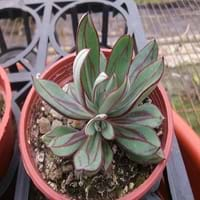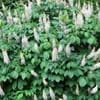Life Span
Perennial
Perennial
Type
Shrub
Cactus or Succulent
Origin
Southeastern United States
Mexico
Types
Not available
Not available
Habitat
Bluffs, Coastal Regions, Stream side, Woods
Mountain forests, subtropical regions
USDA Hardiness Zone
5-9
Not Available
Sunset Zone
Not Available
8, 9, 12, 13, 14, 15, 16, 17, 18, 19, 20, 21, 22, 23, 24
Habit
Spreading
Clump-Forming
Flower Color
White, Pink
Yellow
Flower Color Modifier
Bicolor
Not Available
Fruit Color
Brown
Not Available
Leaf Color in Spring
Green
Purple, Light Green, Gray Green, Burgundy
Leaf Color in Summer
Dark Green
Purple, Light Green, Gray Green, Burgundy
Leaf Color in Fall
Lemon yellow, Yellow green
Purple, Light Green, Gray Green, Burgundy
Leaf Color in Winter
Not Available
Purple, Light Green, Gray Green, Burgundy
Leaf Shape
Palmate
Rosette
Plant Season
Spring, Summer, Fall
Spring, Summer, Fall, Winter
Sunlight
Full Sun, Partial Sun, Partial shade
Full Sun, Partial Sun
Type of Soil
Clay, Loam, Sand
Loam, Sand
The pH of Soil
Acidic, Neutral, Alkaline
Acidic, Neutral, Alkaline
Soil Drainage
Average
Well drained
Bloom Time
Summer, Late Summer
Summer, Late Summer, Early Fall
Tolerances
Salt, Wind
Drought
Where to Plant?
Ground, Pot
Container, Ground, Pot
How to Plant?
Cuttings, Seedlings
Leaf Cutting, Root Division, Stem Cutting
Plant Maintenance
Low
Medium
Watering Requirements
Keep the Soil well drained, Requires regular watering
Does not require regular watering, Keep the Soil well drained
In Summer
Lots of watering
Lots of watering
In Spring
Moderate
Moderate
In Winter
Average Water
Average Water
Soil pH
Acidic, Neutral, Alkaline
Acidic, Neutral, Alkaline
Soil Type
Clay, Loam, Sand
Loam, Sand
Soil Drainage Capacity
Average
Well drained
Sun Exposure
Full Sun, Partial Sun, Partial shade
Full Sun, Partial Sun
Pruning
Remove damaged leaves, Remove dead branches, Remove dead flowers, Remove dead leaves
Remove damaged leaves, Remove dead branches, Remove dead leaves
Fertilizers
14-14-14 Fertilizer, Apply N-P-K, slow-release fertilizers
All-Purpose Liquid Fertilizer
Pests and Diseases
Edema, Powdery mildew, Verticillium Wilt
Not Available
Plant Tolerance
Salt, Wind
Drought
Flower Petal Number
Single
Single
Foliage Texture
Coarse
Bold
Foliage Sheen
Matte
Not Available
Attracts
Butterflies, Hummingbirds
Not Available
Allergy
Pollen
Not Available
Aesthetic Uses
Cottage Garden, Showy Purposes
Beautification, Showy Purposes, Used for decorating walls, fences, gates, hedges, etc.
Beauty Benefits
Not Available
Not Available
Environmental Uses
Air purification, Wildlife
Air purification
Medicinal Uses
Antirheumatic, Colic, constipation, Piles
Not Available
Part of Plant Used
Seeds
Not Available
Other Uses
Used for making soaps
Decoration Purposes, Used as Ornamental plant, Used for Landscaping
Used As Indoor Plant
No
Yes
Used As Outdoor Plant
Yes
Yes
Garden Design
Feature Plant, Foundation, Screening, Wind Break
Container, Hanging Basket, Houseplant, Rock Garden, Wall, Tropical
Botanical Name
AESCULUS parviflora
ECHEVERIA nodulosa
Common Name
bottlebrush buckeye, dwarf horse chestnut
Painted Echeveria, Painted lady
In Hindi
Bottlebrush Buckeye
Painted Echeveria
In German
Buckeye Putzer
Lackierte Echeveria
In French
Bottlebrush Buckeye
Painted Echeveria
In Spanish
bottlebrush Buckeye
pintado señora
In Greek
bottlebrush Buckeye
ζωγραφισμένο κυρία
In Portuguese
Bottlebrush Buckeye
Pintado Echeveria
In Polish
Bottlebrush Buckeye
malowane lady
In Latin
bottlebrush Buckeye
Aeonium Painted
Phylum
Magnoliophyta
Tracheophyta
Class
Magnoliopsida
Magnoliopsida
Order
Sapindales
Saxifragales
Family
Hippocastanaceae
Crassulaceae
Clade
Angiosperms, Eudicots, Rosids
Angiosperms, Core eudicots, Eudicots
Tribe
Not Available
Sedeae
Subfamily
Hippocastanoideae
Sedoideae
Season and Care of Bottlebrush Buckeye and Painted Lady
Season and care of Bottlebrush Buckeye and Painted Lady is important to know. While considering everything about Bottlebrush Buckeye and Painted Lady Care, growing season is an essential factor. Bottlebrush Buckeye season is Spring, Summer and Fall and Painted Lady season is Spring, Summer and Fall. The type of soil for Bottlebrush Buckeye is Clay, Loam, Sand and for Painted Lady is Loam, Sand while the PH of soil for Bottlebrush Buckeye is Acidic, Neutral, Alkaline and for Painted Lady is Acidic, Neutral, Alkaline.
Bottlebrush Buckeye and Painted Lady Physical Information
Bottlebrush Buckeye and Painted Lady physical information is very important for comparison. Bottlebrush Buckeye height is 180.00 cm and width 180.00 cm whereas Painted Lady height is 10.20 cm and width 30.50 cm. The color specification of Bottlebrush Buckeye and Painted Lady are as follows:
Bottlebrush Buckeye flower color: White and Pink
Bottlebrush Buckeye leaf color: Green
Painted Lady flower color: Yellow
- Painted Lady leaf color: Purple, Light Green, Gray Green and Burgundy
Care of Bottlebrush Buckeye and Painted Lady
Care of Bottlebrush Buckeye and Painted Lady include pruning, fertilizers, watering etc. Bottlebrush Buckeye pruning is done Remove damaged leaves, Remove dead branches, Remove dead flowers and Remove dead leaves and Painted Lady pruning is done Remove damaged leaves, Remove dead branches and Remove dead leaves. In summer Bottlebrush Buckeye needs Lots of watering and in winter, it needs Average Water. Whereas, in summer Painted Lady needs Lots of watering and in winter, it needs Average Water.





